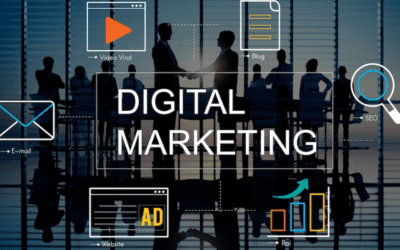Introduction
Content marketing is a form of marketing that involves creating and sharing content to attract, engage, and retain customers. This type of marketing has become increasingly popular as businesses search for new ways to reach their target audiences. Content can come in the form of blog posts, videos, podcasts, infographics, webinars – anything that provides value to users.
The benefits of content marketing include the following:
- Increased brand awareness and visibility.
- Improved customer engagement.
- Better website traffic.
- Higher conversion rates.
- Improved ROI from other channels like PPC (pay-per-click) marketing campaigns.
- More targeted leads.
2023 could bring even more excellent opportunities for content marketers. The continued focus on digital platforms such as social media networks and websites will remain solid, emphasising visuals gaining traction across all platforms, including mobile devices. Additionally, we should anticipate an increase in automation tools designed to streamline distribution efforts while providing more robust data analytics capabilities allowing brands to understand their audience better than ever – optimising experiences through personalisation initiatives tailored not just by demographics but psychographics too!
Trends in Content Creation
We can see a greater emphasis on visual content creation to capture and retain attention. This could include utilising dynamic images, interactive videos, 360-degree views of products or services, and more immersive experiences that allow for deeper engagement with the consumer. We should also anticipate an expansion of platforms for content distribution, such as social networks like Instagram, YouTube, Snapchat, and Pinterest; streaming services like Netflix and Hulu; voice-based technologies such as Alexa and Google Home; virtual reality (VR) headsets; even AR (augmented reality) applications. Finally, there will be an increased focus on ways to engage customers through content – from interactive polls & quizzes to gamified experiences where users are rewarded for engaging with the brand’s offerings. These tactics help build relationships between consumers & brands while providing valuable data & insights into how best to market effectively going forward.
Trends in Content Distribution
The increased use of automation tools is set to revolutionise content distribution Automation can help marketers save time and resources, allowing them to focus on more strategic tasks while ensuring their messages reach the right people at the right time. Automation tools can also track user engagement, giving brands valuable insights into what type of content resonates with their target audience.
Additionally, automated marketing campaigns can be tailored based on customer data such as demographics or purchase history for highly targeted messages with higher conversion rates.
Paid advertising will become increasingly crucial for brands looking to stand out from competitors and maximise visibility online. As competition increases amongst businesses vying for attention online, paid ad campaigns are only sometimes necessary for success within digital channels such as social media networks and search engines. Paid ads often include tactics like pay-per-click (PPC) which allow advertisers to bid on specific keywords related to their industry, so their sponsored content appears when users do relevant searches – providing an opportunity to capture potential leads who are already interested in a product/service offering before they’ve even begun researching options!
Finally, messaging apps offer unprecedented opportunities for businesses looking to engage directly with customers – no matter where they may be located worldwide! Consumers are becoming accustomed to communicating through these platforms, which has caused an influx of companies utilising this medium as a way of connecting with consumers efficiently & effectively; it’s not uncommon nowadays that if you message a business via Facebook messenger or Whatsapp, you’ll receive an automated response quickly followed by personalised customer service from a human representative! This trend will only increase in 2023, so tap into its potential now!
Content Adaptation Trends
Voice search and voice assistants are becoming increasingly popular as people look for quicker, more convenient ways to find information. Voice-enabled technologies like Alexa, Google Home, and Siri have made it easier to speak your request into a device to receive an answer – no typing required! This shift towards utilising our voices rather than keyboards has caused brands to adapt their content strategies accordingly, optimising “voice-friendly” content for these devices. In 2023 we can expect this trend will continue with businesses having to make sure their content is easily discoverable by voice search engines such as Google Assistant or Apple Siri.
AI (Artificial Intelligence) driven content creation is another trend set to become even more prominent in AI technology used today by many companies looking for efficient solutions for creating engaging content quickly & easily. Rather than relying on manual labour from human beings, AI bots can generate blog posts, emails and social media updates using natural language processing algorithms which analyse past data/content performance & then generate new ideas based on those findings – all without needing any input from humans! We can anticipate rapid AI advancements, allowing marketers access to higher levels of automation & customisation within their campaigns, so keep an eye out for what’s next!
Content personalisation has already been gaining traction over the last few years; however, we should expect this trend only increase fervour going into Consumers’ desire for personalised experiences tailored specifically around them; they don’t want generic messages or promotions but rather ones that take into account their interests & preferences – leading them down a path tailored just for them. Marketers need to be aware of this if they wish to stand out amongst competitors while also delivering customers quality experiences across channels, thus making data analysis an essential part of any successful strategy moving forward!
Trends in Content Optimisation
SEO (Search Engine Optimisation) will remain crucial to content optimisation. SEO helps to ensure that webpages are indexed by search engines such as Google, making them more visible and discoverable online. By understanding how users interact with their website, brands can optimise their pages to make it easier for users to find the information they need – improving user experience while providing better visibility on SERPs (search engine results pages). Additionally, keyword research should be conducted regularly to understand which terms consumers are searching for related to products/services offered; this helps inform strategies when developing new content or optimising existing pieces around those topics.
Website optimisation is another important factor within content strategy – ensuring websites maintain high performance across all devices & browsers while offering visitors an easy-to-navigate interface. This includes keeping page loading times under 3 seconds; optimising images & videos so they’re not too large & slow down the site; utilising responsive design so there’s one version of the website regardless of device size or orientation; avoiding pop-ups & intrusive ads that disrupt user flow; plus testing different elements like fonts, colours, layouts etc. based on visitor feedback until you have a winner! All these efforts help create an enjoyable browsing experience, leading to higher conversion rates from organic traffic sources!
Data and analytics tools are essential when understanding what content resonates best with target audiences. Through data analysis, marketers can gain valuable insights into customer behaviour, including where they came from before landing on your page, what actions did they take afterwards etc. – all helping inform decisions in the future regarding how best to reach out to potential customers & build relationships with existing ones alike. Automation tools allow businesses to track various KPIs (key performance indicators) over time, giving them greater visibility into campaign effectiveness and allowing quick adjustments if needed, thus creating even more efficient marketing initiatives!
Conclusion
Overall, content marketing will continue to be a powerful tool for businesses in 2023 and beyond. The key is staying ahead by understanding and leveraging the latest trends for maximum impact. By utilising automated marketing, paid ads, messaging apps, voice search and assistants, AI-driven content creation, personalisation tactics, SEO optimisation and data analysis tools – brands can ensure their messages reach the right people at the right time resulting in higher conversions & ROI! Marketers must understand what content resonates with their target audience and how to optimise it across channels. Hence, they always take advantage of every opportunity to engage potential customers effectively. As competition increases amongst businesses vying for attention online, it will become increasingly important for companies to focus on creating quality experiences which stand out from competitors – no matter what platform they may be using!





